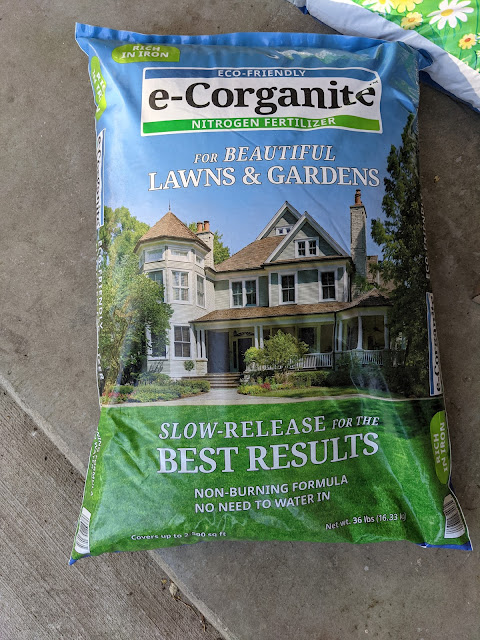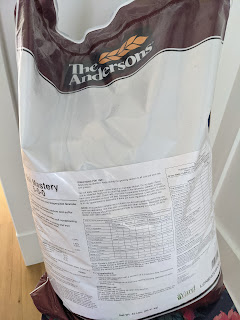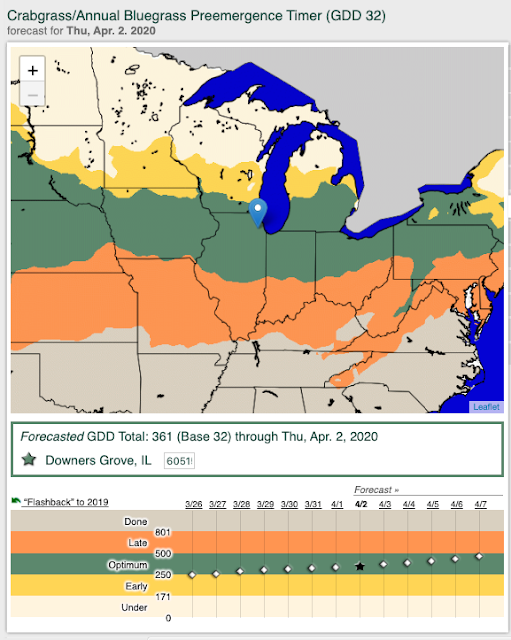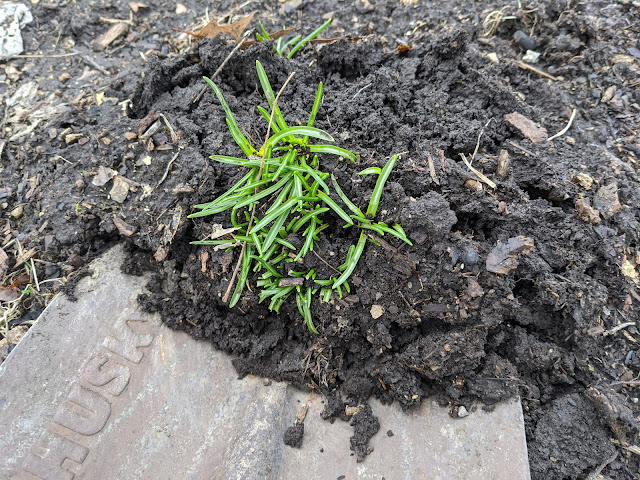Fall Fertilizer e-Corganite on Lawn - December 2021

I started my lawn feeding program this year (2021) with a granular bio solid product called e-Corganite (from Menards) and I'm finishing off the year with the same 40# bags of e-Corganite for my late Fall/early Winter dormant feeding. I had three bags of this fertilizer on hand and threw it down heavy this weekend. I'm PRETTY SURE that I did the same thing (an early December feeding) last year, but I don't have it posted on the blog. Here's a post from early December 2019 showing how I used a few bags of Milorganite on the lawn as it was dormant and cool . Many folks will tell you that this late Fall/early Winter dormant feeding of the lawn is the *most* important one you can do - and if you were to do JUST ONE feeding per year, this one might be the one to choose. Penn State's extension office says the benefits of feeding your lawn this time of year include a good 'green up'. From PSU : Late fall fertilization should take place when shoot growth ce


















